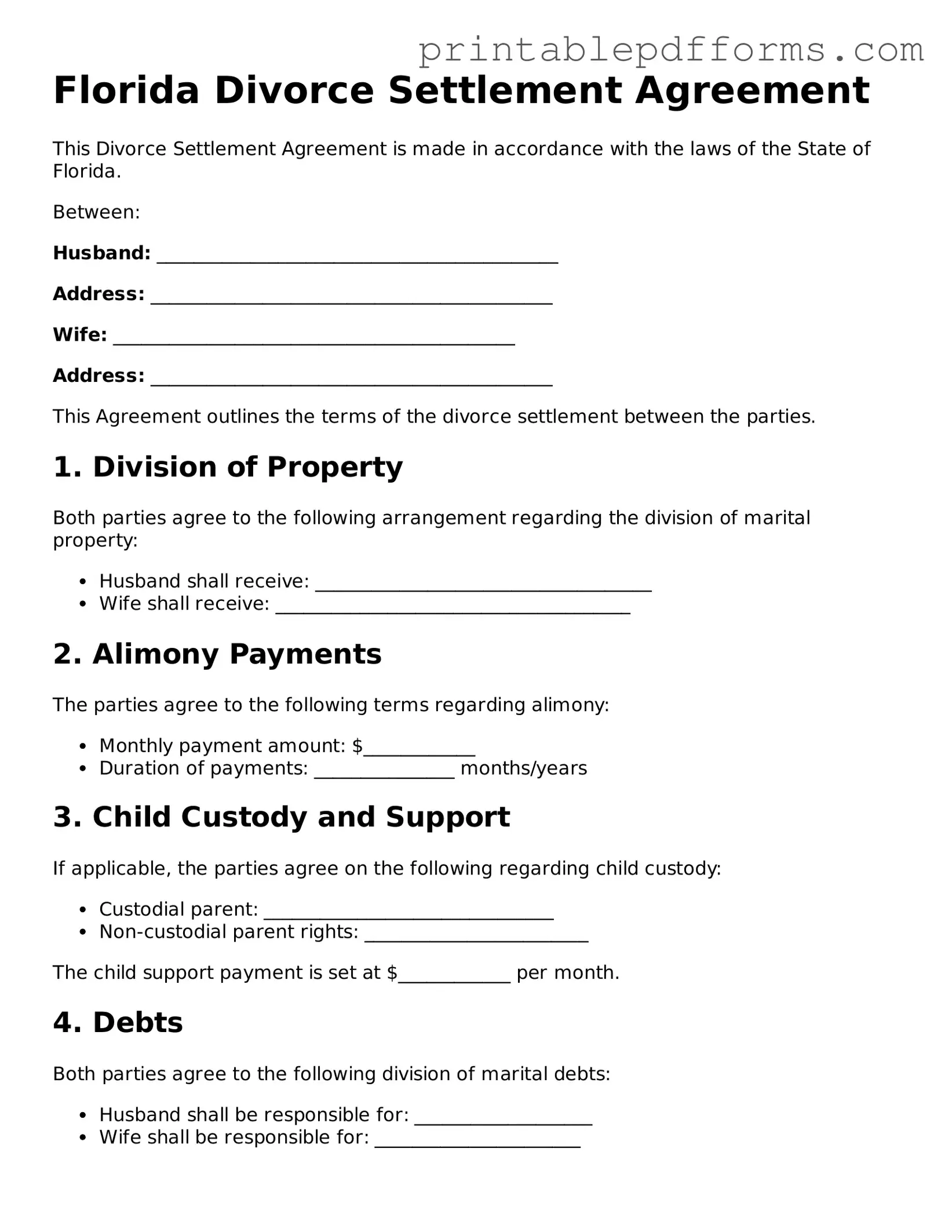Florida Divorce Settlement Agreement
This Divorce Settlement Agreement is made in accordance with the laws of the State of Florida.
Between:
Husband: ___________________________________________
Address: ___________________________________________
Wife: ___________________________________________
Address: ___________________________________________
This Agreement outlines the terms of the divorce settlement between the parties.
1. Division of Property
Both parties agree to the following arrangement regarding the division of marital property:
- Husband shall receive: ____________________________________
- Wife shall receive: ______________________________________
2. Alimony Payments
The parties agree to the following terms regarding alimony:
- Monthly payment amount: $____________
- Duration of payments: _______________ months/years
3. Child Custody and Support
If applicable, the parties agree on the following regarding child custody:
- Custodial parent: _______________________________
- Non-custodial parent rights: ________________________
The child support payment is set at $____________ per month.
4. Debts
Both parties agree to the following division of marital debts:
- Husband shall be responsible for: ___________________
- Wife shall be responsible for: ______________________
5. Legal Fees
Each party shall bear their own legal fees unless otherwise agreed upon:
Husband's Legal Fees: $_______________
Wife's Legal Fees: $_______________
6. Signatures
This Agreement is binding upon both parties upon signature.
Husband Signature: _______________________ Date: ____________
Wife Signature: _________________________ Date: ____________
This Divorce Settlement Agreement has been executed voluntarily and should be upheld under Florida Law.
